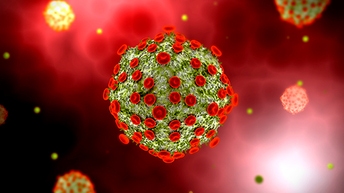Lentiviral vector backbones for preclinical development
Revvity’s lentiviral vector backbones with increased packaging capacity shuttle the therapeutic transgene safely and efficiently into the therapeutic target cell. The development of these backbones is guided by three principles:
- Decrease the amount of remaining HIV viral sequences
- Optimize the manufacturability of the lentiviral particles for large scale productions
- Improve the manufacturing process of an ex vivo gene therapy
Cell and Gene therapy developers can access Revvity‘s lentiviral vector backbones or use our capabilities for customized de novo development of a novel lentiviral vector backbone. We also provide support with backbone documentation for sequence and plasmid material traceability to smooth the path for IND applications.
Therapeutic expression cassette development
Lentiviral vectors feature a high packaging capacity for large and complex transgene cassettes, making them a promising vehicle for CAR and TCR constructs in ex vivo gene therapy development.
Our experienced lentivirus specialists offer consultation and support to cell and gene therapy developers. We provide in-depth analysis of transgene cassettes to help identify designs that consider safety, efficacy, and manufacturability for your specific targeted application.
To tailor the therapeutic transgene cassette to a cell and gene therapy developer’s needs, we utilize a broad range of strategies and molecular tools, including:
- Physiologic and regulated promoter activity
- Reduction of immunogenicity
- Tissue specific translation regulation
- Transcriptional and translational regulation of bi- and multicistronic cassettes
Lentivirus surface modification technology
Increasing specificity is a key prerequisite for developing safe and effective gene and cell therapies. Our surface modification technology directs lentiviral vectors against a specific molecular target to further improve transduction efficiencies. The technology can be used for optimizing gene transfer to specific cell types such as CD8 cells and for the development of in vivo therapies. Due to its universal applicability and non-toxic chemistry, targeting of various cell types is feasible.
A key element of the surface modification is the display of a targeting ligand such as a nanobody or a scFv antibody on the virus envelope. Revvity’s proprietary collection of scFV sequences is available for retargeting and development of chimeric antigen receptors (CAR). These single-chain antibodies have a high affinity and specificity to peripheral proteins of cell surfaces, helping to enable precise viral transduction.
Revvity’s lentivirus surface modification technology has several advantages:
- Improving gene transfer efficiency
- Effective independent of cell type
- Synergistic effect with LentiBOOST (see figure)
- Demonstrated enhanced transduction in certain therapeutically relevant cell types that have traditionally been challenging to modify.
LentiBOOST™ transduction enhancer technology
Revvity’s LentiBOOST is a well-known lentiviral transduction enhancer for research and clinical applications in a wide range of cell types. It increases vector copy number and significantly improves lentivirus transduction efficiency, helping to increase clinical benefit and to reduce the cost of manufacturing cell therapies.
Explore our solutions
You may also be interested in
Questions?
We’re here to help.
Contact us Please note that product labeling (such as kit insert, product label, and kit box) may be different compared to the company branding. Please contact your local representative for further details.


































